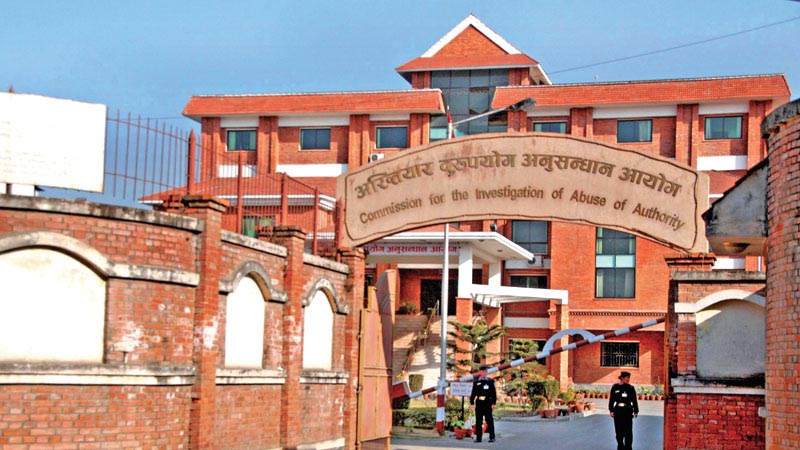38 govt employees booked for corruption
Kathmandu, November 24
The Commission for the Investigation of Abuse of Authority today filed a charge-sheet against 38 persons, including the chief of Ekantakuna-based Transport Management Office and two inspectors, at the Special Court for their alleged involvement in corruption, financial irregularities and revenue leakage.
Some of the government employees indicted by the anti-graft body have already retired from government service. Those booked for graft are TMO chief Ananda Keshari Pokharel, engineer Basudev Pokharel (retired), inspectors Nawaraj Thapa and Murari Mishra, section officer Ram Mani Pokharel (retired), and section officers Ishwar Raj Regmi, Shambhu Prasad Thapaliya, Dharmaraj Dhungana and Babulal Regmi. Similarly, 29 others include non-gazetted second class and first class employees.
According to the CIAA, the TMO chief, section officers and inspectors colluded with intermediaries to issue driving licence to 1,284 persons, who did not even attend the trial exam or failed in the trial, during the period from mid-April to mid-July in 2012. “No person, who failed the written or trial exam, was entitled to attend the written test or trial for the second time before three months. Contrary to this legal provision, they allowed ineligible candidates to appear for test, issued driving licence to unsuccessful or absent candidates and tampered with the driving test results,” said Joint Secretary Pradip Kumar Koirala, CIAA spokesperson.
Their unethical activities had also resulted in revenue loss. They have been charged under the Prevention of Corruption Act-2002. In the charge-sheet, the CIAA has sought recovery of amounts ranging from Rs 100 to Rs 859,500 that they embezzled, in addition to an equivalent fine. If any authorised person alters the results of examinations with the intention of gaining illegal advantage, he/she shall also be liable to imprisonment from three months to one year, along with the fine ranging from Rs 5,000 to Rs 10,000 depending on the gravity of the offence.






